Because the landscape had been neglected for almost a decade, the yard of my former home was full of horticultural surprises when we first moved in: daffodils that started blooming again once dug and divided, irises that smelled like grape lollipops, bulbs that sent up leaves in spring but didn’t bloom until fall (colchicums) and a wild rose without thorns.
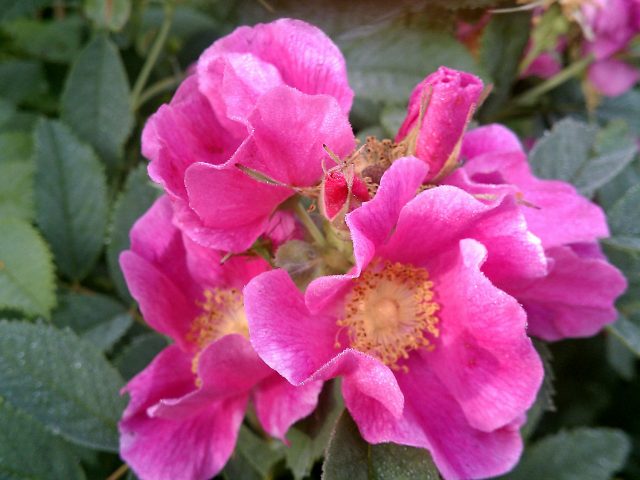
I think I love the flowers best when they are half-opened. They have a mild fragrance most noticeable on warm days.
For years I couldn’t decide whether it was
Rosa virginiana or
Rosa caroliniana. Going by the pictures, it could have been either. The only thing that tripped me up was the descriptions always mentioned thorns, and I could never find thorns on this rose. (Rose thorns are actually prickles, because they are
derived from epidermis tissue, but I’ll stick with thorns to keep it simple.) At times I wondered if it was actually a swamp rose (
Rosa palustris), because the soil where it grew was rather damp. It wasn’t until recently that I googled
thornless native rose and came up with smooth rose,
Rosa blanda.
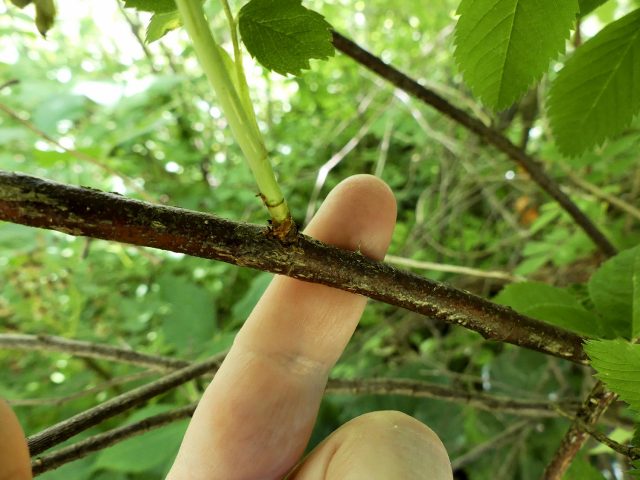
Not quite thornless, but even the prickles that are there are modest by rose standards.
Of course, identifying a native plant by a photo alone can often lead one astray. If I had looked at the stipules, I would have been more certain that it was not Virginia rose, whose
stipules are widest at the top.
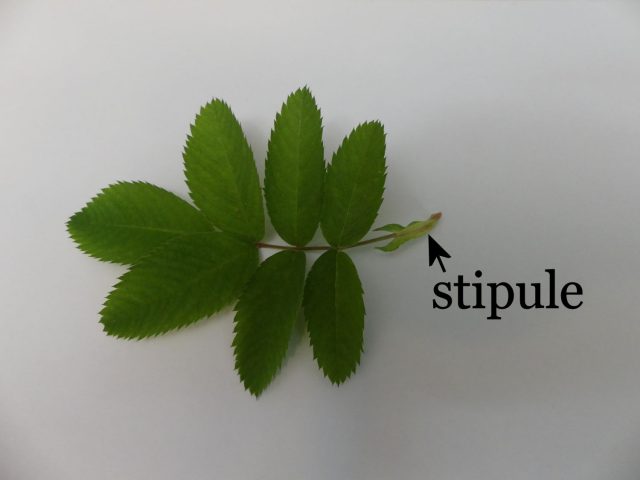
The stipule of a rose leaf can offer clues to its identity.
The location of glands can also help in identification.
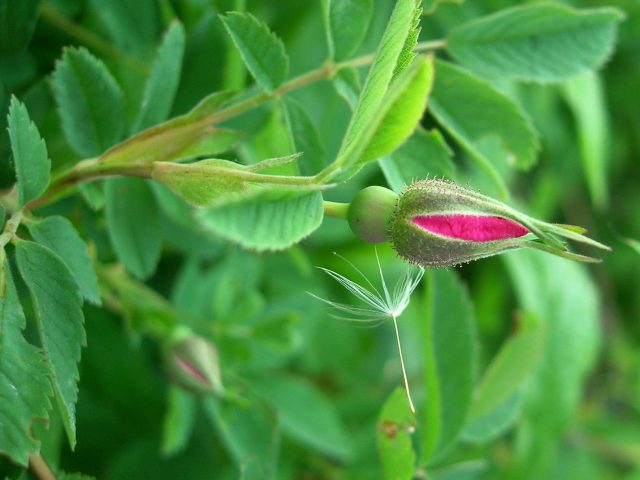
Rosa blanda does not have glands on the round structure just behind the flower (hypanthium). R. virginiana does.
has
“lots of bristles on its leaf petioles” (the “stem” of a leaf) and the smooth rose doesn’t.
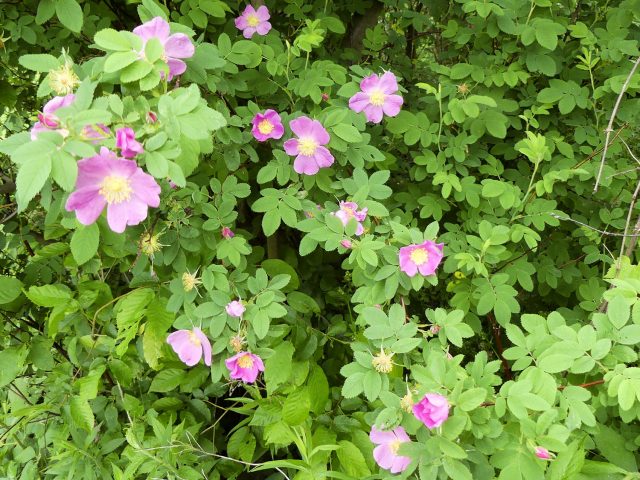
Peak bloom is around the second week of June here, before any of my cultivated roses, and before the invasive R. multiflora.
But the lack of thorns is the clincher. The swamp rose has “pairs of
stout, downwardly curving spines that grace each node of the stem,” according to the New England Wildflower Society. The
Carolina rose has “slender, straight prickles at the nodes of the stems.” The University of Connecticut lists
“paired prickles” as an identifying feature of the Virginia rose. Yet I really had to search the smooth roses growing in the bird sanctuary to find even one thorn (which really does look like a mere prickle) to photograph above.
I am glad to have finally figured out the correct identity of my sweet, wild rose. Perhaps now I can learn a bit more about it.
Posted for Wildflower Wednesday, created by Gail of Clay and Limestone, to share wildflowers/native plants no matter where you garden in the blogosphere. “It doesn’t matter if we sometimes show the same plants. How they grow and thrive in your garden is what matters most. It’s always the fourth Wednesday of the month!”










I’ve been dashing around in the car, and seen something like this by the side of the road – going to take some time to slow down to see, if by chance they might be Rosa blanda.
It is beautiful!
Thanks for your input on how to identify wild roses. Your log was written very well and will help me to go out and identify the roses growing on part of my property.
This is one department that I must admit I lack in, ROSES. I actually never new that there were thornless roses (almost thornless). 2 reasons I think I tend to stay away are the thorns and they seem to get diseases. At least the ones I take care of always seem to get a fungus if not treated with something. You opened my eyes to something new and think I might give these a try. Thanks
A rose that is fragrant and doesn’t attack with thorns, is perfect.
Beautiful rose! I admire your expertise in identifying plants (thinking back to the Celandine poppies). I would have declared this a Swamp Rose – of which I have – the flowers look very much like it – but, hmmm, no thorns. I know my Swamp Rose has thorns!
What a beautiful rose! I love wild roses. Thank you for sharing.
Great attention to detail. I was on a nature walk last week here in S. Florida. I needed a guide with your patience and ability to determine the different plants.
Bill
Wonderful lesson Kathy on identifying your rose. I have long admired this rose and have it on my list of must haves….now it tops the list. I have Swamp rose but it does sucker a lot so an early native rose that likes it a bit drier will be welcome in my garden in a few spots.
This rose suckers as well, but not as aggressively as some roses I have. And I wouldn’t say it likes dry soil, just drier than the swamp rose!
It’s lovely, whatever its name. And I agree with Leslie, you are very good at noticing the small differences that make it possible to identify a plant correctly.
It’s a lovely rose and I love that it hardly has any “thorns”! I so agree with Leslie! gail
It is beautiful!
Have a great week!
Lea
You are so good at noticing (under understanding) the tiny differences among plants!